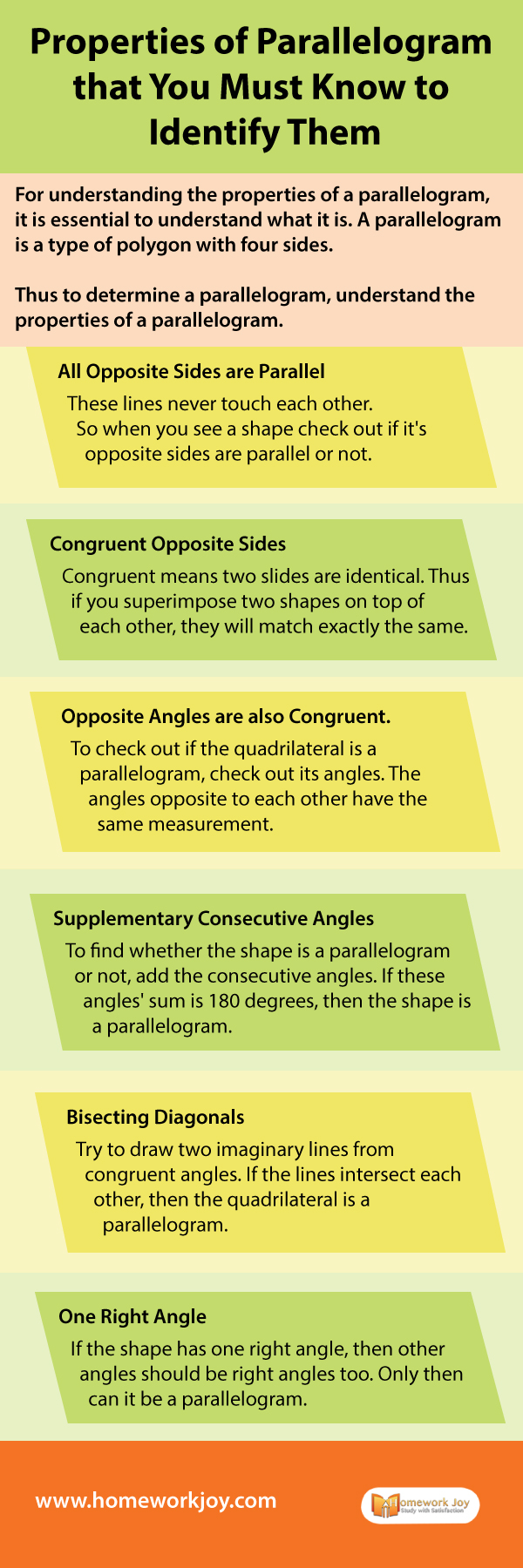If you are looking to understand what we call as a parallelogram, then check out its properties. But for understanding the properties of a parallelogram, it is essential to understand what it is. A parallelogram is a type of polygon with four sides. Here we’ll see which type of figure parallelogram is:
Before moving ahead, check out some of our latest posts:
Thus to determine a parallelogram, understand the properties of a parallelogram.
All Opposite Sides are Parallel
These lines never touch each other and always maintain the same distance. Thus a parallelogram is a figure in which opposites sides would never touch each other. So when you see a shape check out if it’s opposite sides are parallel or not.
Congruent Opposite Sides
Do you know what does it mean by congruent? It simply means the two things are identical. Thus if you superimpose two shapes on top of each other, they will match exactly the same. That means if we cut the shape in half and put them on each other, then they should exactly match the same. Only then we can call that shape a parallelogram.
Opposite Angles are also Congruent.
To check out if the quadrilateral is a parallelogram, check out its angles. The angles opposite to each other should have the same measurement only then we can call it a parallelogram. Besides this, it is common for a parallelogram to have two acute angles and two obtuse angles. But both acute angles and both obtuse angles, in a parallelogram, will have the same measurement.
Supplementary Consecutive Angles
To find whether the shape is a parallelogram or not, add the consecutive angles. If these angles’ sum is 180 degrees, then the shape is a parallelogram. Let’s say the shape that you are checking has an angle of 35 degrees and another angle of 145 degrees then these angles will make 180 degrees. Thus the shape will have supplementary consecutive angles.
Bisecting Diagonals
Try to draw two imaginary lines from two opposite angles. These two lines should create two congruent triangles within the shape. If the lines intersect each other, then the quadrilateral is a parallelogram.
One Right Angle
If the shape has one right angle, then other angles should be right angles too. Only then can it be a parallelogram as we know that the opposite angles are congruent and they’ll add on to make 180 degrees.
So these were some properties of parallelogram that you must know. If you need more maths assignment help, then contact us instantly.
